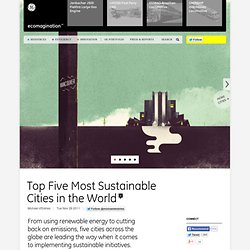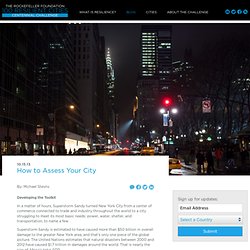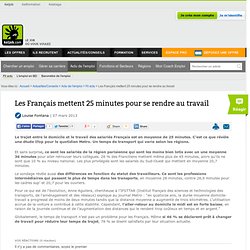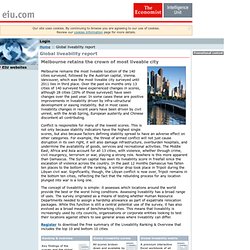

Top Five Most Sustainable Cities in the World. From using renewable energy to cutting back on emissions, five cities across the globe are leading the way when it comes to implementing sustainable initiatives.

Vancouver, Canada Consistently performing well in worldwide “livable city” rankings, Vancouver has an ambitious goal of becoming the “the greenest city in the world” by 2020. They already lead the world in hydroelectric power—making up 90 percent of its supply—as well as regularly tapping into renewables like wind, solar, and wave power. Thanks to mass transit, bike lanes (248 miles worth), ride sharing programs, and greenways, Vancouver has the lowest per capita carbon emissions of any major city on the continent. As part of their 2020 goals, they aim to decrease emissions an additional 33 percent, while also enacting strict green building codes (all new developments must be carbon neutral) and improving the energy efficiency of existing structures by 20 percent.
San Francisco, U.S. The World's Ten Worst Public Transit Systems. You're a tourist, not a daily user, so your opinion is skewed.

Tourists come in, look at the lofted ceilings and go "OOOOOH, this takes me from my affordable Crystal City hotel to the White House and the Smithsonian, just where I wanted to go!!! " Trust me, you ride this thing for anything more than a week solid, and you'll be wondering why DC even bothers. I've been a daily rider since 2005 (minus a two-year break for a job in the outer burbs), and have watched the system deteriorate at a rapid pace since I was a kid in the `70s.
I recently took a job downtown a block or so from the White House and am reliant on the Metro, and I have had at least one 30+minute unplanned delay per week since I started. 10 trips a week, and at least 1 of those 10 trips is significantly delayed. Hong Kong MTR. Share on Facebook Share on Twitter Hong Kong, China.

The 5 Best Mass Transit Systems in the World. 30 Minutes on Mass Transit in 20 World Cities - Nate Berg. You've got 30 minutes and a bus pass.

The world is your weirdly shaped blob. Amsterdam dépassée par le succès du vélo. GaWC Research Bulletin 421. (Z) S.

Hennemann* Abstract Network information on geographical entities such as cities is frequently analysed numerically, but seldom visualised in an appealing form. Reasons for this include the absence of powerful software that is capable of handling large-scale networks and layouting this information without extensive visual clutter. In addition, classic network drawing algorithms (e.g. Fruchterman-Reingold) are not optimised for the representation of geographically fixed nodes, and the standard repertoire of cartography is not suited to mapping complex network information. To tackle these issues, a method-mediating circular layout is presented that (1) roughly preserves the geographical information, (2) allows for the drawing of less cluttered relations between the geographical entities, and (3) offers the possibility of including more information on the underlying node and edge attributes when compared to conventional two-dimensional layouts.
Voici venu le temps des métropoles. How to Assess Your City. Developing the Toolkit In a matter of hours, Superstorm Sandy turned New York City from a center of commerce connected to trade and industry throughout the world to a city struggling to meet its most basic needs: power, water, shelter, and transportation, to name a few.

Superstorm Sandy is estimated to have caused more than $50 billion in overall damage to the greater New York area, and that’s only one piece of the global picture. The United Nations estimates that natural disasters between 2000 and 2012 have caused $1.7 trillion in damages around the world. That is nearly the size of Africa’s total GDP. 100 Resilient CIties - Rockefeller Foundation. Presents the Future Of Cities. The Future Of Cities. General Electric - villes durables 2012. Les grandes villes préférées des Français. Le regard des Français sur leur ville : ressenti, jugement à l’égard de l’action municipale et attentes vis-à-vis de la ville idéale. Partenaire de la 3ème édition du Concours National des Villes, l'Ifop a réalisé un sondage sur « Le regard des Français sur la ville idéale » auprès des habitants des 420 communes de plus de 20.00 habitants.

Où vivre - Les villes les mieux classées. Brochure sondage IPSOS-UNEP. Partir travailler en province : le rêve d'un Francilien sur deux. Les Français mettent 25 minutes pour se rendre au travail. Le trajet entre le domicile et le travail des salariés Français est en moyenne de 25 minutes.

C’est ce que révèle une étude Ifop pour le quotidien Metro. Un temps de transport qui varie selon les régions. Et sans surprise, ce sont les salariés de la région parisienne qui sont les moins bien lotis avec un une moyenne 36 minutes pour aller retrouver leurs collègues. 26 % des Franciliens mettent même plus de 45 minutes, alors qu’ils ne sont que 10 % au niveau national. Global liveability report_EIU.com. Melbourne retains the crown of most liveable city Melbourne remains the most liveable location of the 140 cities surveyed, followed by the Austrian capital, Vienna.

Vancouver, which was the most liveable city surveyed until 2011 lies in third place. Over the past six months only 13 cities of 140 surveyed have experienced changes in scores, although 28 cities (20% of those surveyed) have seen changes over the past year. Les grandes villes préférées des Français. Vienne occupe la première place mondiale dans le top 10 des „Smart Cities“ - ADVANTAGE AUSTRIA internationale. Le magazine online „Co.Exist“ voit la capitale autrichienne comme un creuset de développement durable et d’innovation en distinguant Vienne comme première ville intelligente au monde.

Dans le classement technologique et durable du climatologue américain Boyd Cohen récemment paru dans le magazine online „Co.Exist“, Vienne occupe la première place, suivie de Toronto et Paris. Dans le top 10 viennent ensuite New York, Londres, Tokyo, Berlin, Copenhague, Hongkong et Barcelone.